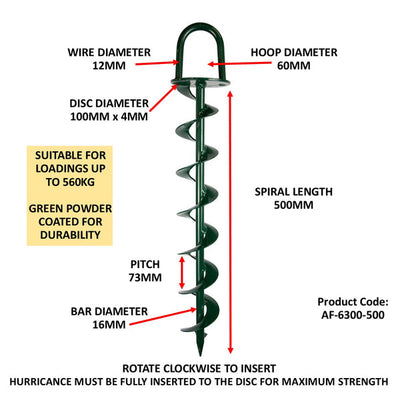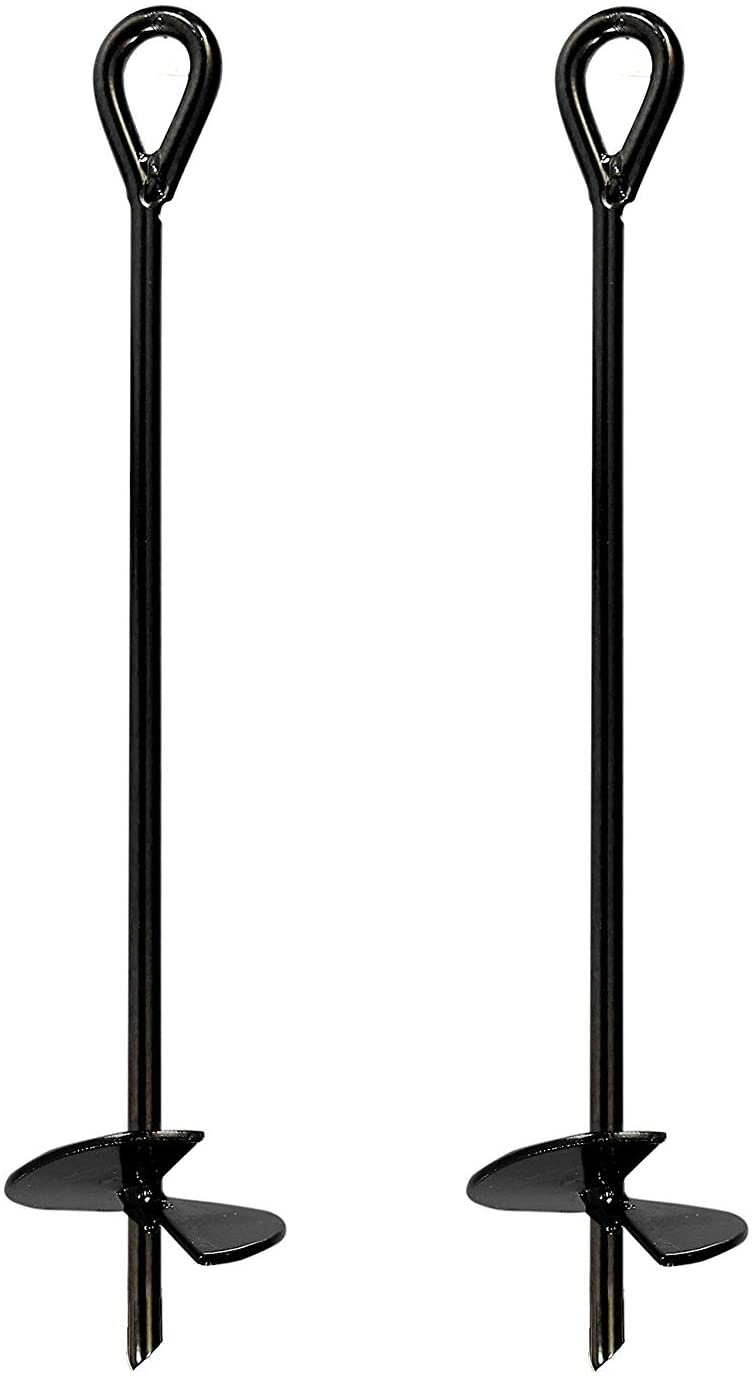Analyzing Various Ground Anchor Models to Select the Perfect Fit for Different Uses
Analyzing Various Ground Anchor Models to Select the Perfect Fit for Different Uses
Blog Article
Check Out the Different Kinds Of Ground Anchor for Your Next Task
From auger anchors, which excel in diverse soil conditions, to risk anchors developed for short-term installations, the choices are various. Additionally, concrete and screw supports present distinct advantages in particular situations, while deadman anchors are tailored for applications requiring resistance to side forces.

Auger Anchors
Auger supports are a preferred option in various building and construction and landscaping jobs as a result of their unique design and effective securing capabilities. These anchors include a helical screw-like shaft that is driven into the ground, enabling a secure and secure hold. The spiral layout promotes simple setup and makes the most of resistance against lateral forces, making auger supports specifically efficient in applications such as fencing, short-lived structures, and disintegration control.
The installation procedure of auger anchors is fairly uncomplicated. They can be manually or mechanically mounted, depending upon the size and called for deepness. This flexibility enables their usage in diverse soil problems, from sandy to clayey surfaces. Moreover, auger supports can be conveniently gotten rid of and recycled, which adds to their cost-effectiveness and sustainability.
Among the substantial advantages of auger supports is their ability to disperse loads evenly across the bordering dirt, minimizing the danger of soil disturbance and minimizing ecological effect. Additionally, they are much less at risk to heaving or loosening over time compared to conventional anchoring methods. Subsequently, auger supports are an outstanding choice for jobs needing trustworthy and long lasting anchoring solutions.

Stake Anchors
When it comes to protecting structures in a variety of outside applications, risk anchors offer a straightforward and trustworthy solution. These supports are generally constructed from resilient materials such as steel or aluminum, designed to withstand environmental anxieties while providing optimal stability. Their basic layout enables fast installation, making them an excellent selection for long-term or short-lived anchoring requirements.
Stake supports are especially useful in safeguarding camping tents, covers, and various other lightweight frameworks against wind and climate. They operate by being driven into the ground at an angle, creating a solid hold that resists pull-out forces - Ground Anchor. The effectiveness of stake supports relies on several elements, consisting of dirt kind, wetness web content, and the angle of installment
For included protection, lots of stake supports come with add-on factors for ropes or straps, enabling for tension modifications as required. In applications such as landscape design or building, they can properly support equipment or structures on unequal surface. In general, risk supports offer a cost-efficient and versatile remedy for securing numerous outdoor installments, making them a recommended option for contractors and DIY fanatics alike.
Concrete Anchors
Concrete anchors supply a durable service for securing structures to concrete surface areas, guaranteeing stability and safety in different applications. These supports are crucial for tasks ranging from property constructions to large-scale commercial installations. They are available in various types, including expansion anchors, adhesive supports, and undercut supports, each designed for certain lots requirements and environmental problems.
When mounted,Development anchors rely on mechanical mechanisms to grasp the concrete. They are suitable for tool to durable applications. Adhesive supports utilize high-strength epoxy or material to bond the support to the concrete, offering premium load-bearing abilities, specifically in fractured concrete situations. Undercut anchors produce an unique form within the concrete, offering extraordinary holding power, particularly in applications where tensile tons are common.
When carried out properly, concrete anchors dramatically boost the architectural integrity of numerous jobs, making them go essential in modern building methods. Comprehending the details needs of your project will help in selecting the best kind of concrete anchor for the task.
Screw Anchors

Screw anchors are a versatile attaching solution that can be successfully used in a range of applications where standard concrete anchors might not suffice. These supports include a helical style that allows them to be conveniently driven right into the ground, making them excellent for use in soil and other substrates. Their distinct framework supplies exceptional holding power and resistance to pull-out pressures, making them suitable for numerous tasks, from landscape design to structural support.
Among the key advantages of screw anchors is their convenience of setup. They need minimal equipment and can frequently be set up without the requirement for excavation, which saves both time and labor expenses. Additionally, screw discover this anchors can be removed and reused, using a lasting remedy for short-lived applications.
Screw supports are specifically useful in locations where soil conditions are challenging, such as loosened or sandy soils. Their ability to be mounted at varying midsts enables personalization based on details project requirements. In general, screw anchors offer a reliable and reliable securing approach, making them an outstanding option for specialists and engineers seeking reliable remedies for their tasks.
Deadman Anchors
Deadman anchors work as a durable remedy for maintaining frameworks in tough problems, particularly where typical securing methods might fail. These anchors contain big, hefty things hidden underground, which produce resistance against lateral forces. The style typically entails a straight component, such as a block of concrete or a metal plate, buried in the soil, to which bands or cables are connected.
The efficiency of deadman supports depends on their ability to disperse loads over a bigger location, lowering the danger of failure in unsteady soil problems. They are specifically helpful in applications such as keeping walls, momentary frameworks, and incline stablizing, where dirt activity can compromise the integrity of the framework.
Installation of deadman anchors calls for mindful preparation to ensure they are put at the correct depth and orientation, maximizing their load-bearing capability. While they may need even more labor and product than light-weight supports, their dependability in negative conditions makes them invaluable for long-lasting jobs. Deadman anchors are functional and learn the facts here now can be adapted to numerous applications, making them a best choice for engineers encountering unique difficulties in their jobs.
Conclusion
In summary, picking the appropriate kind of ground anchor is vital for guaranteeing stability and protection in numerous jobs. Auger supports stand out in diverse dirt conditions, while stake supports match temporary applications. For concrete surfaces, growth and adhesive supports supply trustworthy options, and screw supports supply versatility in challenging surfaces. Deadman supports are especially reliable in resisting side pressures for preserving wall surfaces. Mindful factor to consider of these alternatives will boost project end results and architectural stability.
In addition, concrete and screw anchors existing one-of-a-kind advantages in certain scenarios, while deadman supports are customized for applications requiring resistance to side forces - Ground Anchor.Auger supports are a preferred choice in different construction and landscape design tasks due to their one-of-a-kind layout and efficient anchoring capabilities. They come in various kinds, consisting of development supports, adhesive anchors, and undercut anchors, each designed for particular lots requirements and ecological conditions
Sticky anchors use high-strength epoxy or material to bond the support to the concrete, using superior load-bearing abilities, especially in cracked concrete circumstances. On the whole, screw anchors provide a effective and dependable anchoring method, making them an exceptional selection for designers and service providers looking for effective services for their tasks.
Report this page